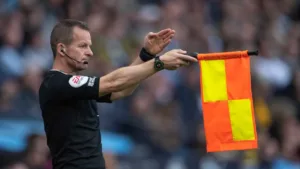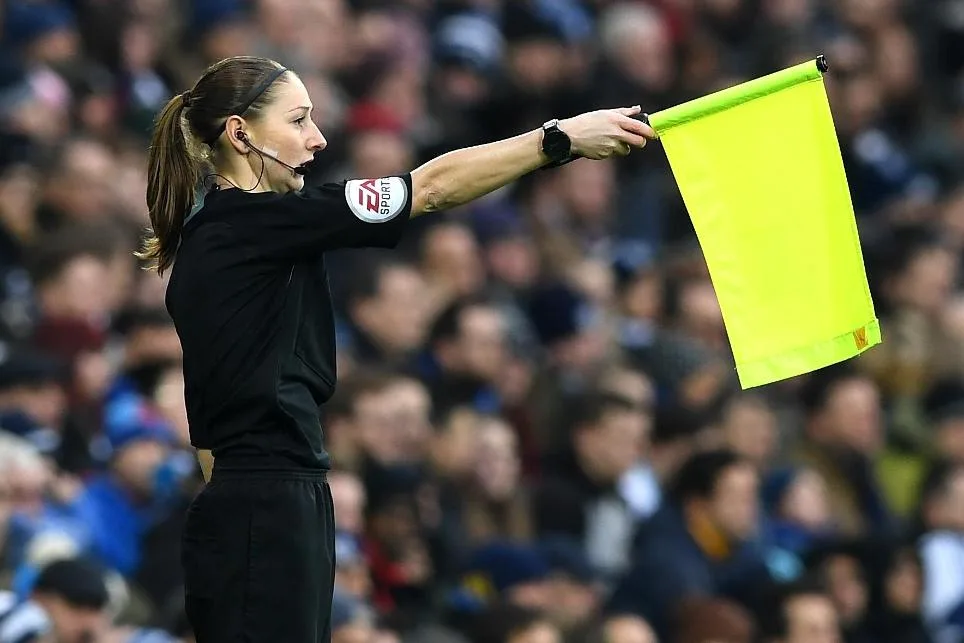The offside rule is one of the most critical and debated concepts in football. It is a rule that has been in place for over a century and has undergone many changes since its inception. The offside rule is designed to prevent players from gaining an unfair advantage by being in an offside position. The rule is essential in ensuring fair play, and it is a cornerstone of the game’s strategy and tactics.
The history of the offside rule dates back to the early days of football. The first set of rules established in 1863 did not have an offside rule. However, as the game evolved, the offside rule was introduced to prevent players from camping in front of the opposing team’s goal. Over the years, the offside rule has undergone several modifications to make it more effective and easier to understand. Today, the rule is a fundamental aspect of the game and is applied across different leagues worldwide.
Understanding the offside rule is crucial for any football player, coach, or fan. The rule can be complex, and it requires a good understanding of the game’s dynamics. This article will delve deeper into the offside rule concept in football, its history, application in modern football, strategies and tactics, controversies and debates, offside rule across different leagues, educational resources, and frequently asked questions.
Key Takeaways
- The offside rule is a critical and debated concept in football that is designed to prevent players from gaining an unfair advantage by being in an offside position.
- The offside rule has undergone several modifications since its inception in the early days of football to make it more effective and easier to understand.
- Understanding the offside rule is crucial for any football player, coach, or fan, and this article will provide a comprehensive guide to the concept.
History of the Offside Rule
Origins and Evolution
The offside rule has been a part of football since its inception, albeit in a different form than what it is today. In the early days of football, there was no offside rule. Players could hang around the opposition’s goal and wait for the ball to come to them. This often led to a congested goal area and a lack of attacking play.
The first recorded use of the offside rule in football was during the 1800s. However, it wasn’t until the Football Association Laws of the Game were introduced in 1863 that the offside rule became universal. Even then, it was quite different from what it is today. Initially, the offside rule stated that a player was offside if they were ahead of the ball and the second-last defender. This led to many controversies and debates, as it was often difficult for the officials to determine whether a player was offside or not.
Major Amendments and Their Impact
Over the years, there have been several amendments to the offside rule in football. In 1925, the offside rule was changed to state that a player was only offside if they were ahead of the ball and the last defender. This made it easier for officials to make decisions and reduced the number of controversies surrounding the rule.
In 1990, the offside rule underwent another major change. The rule was amended to state that a player was only offside if any part of their body that could score a goal was ahead of the ball and the last defender. This meant that a player could be onside even if they were ahead of the ball, as long as they didn’t have a scoring opportunity.
The offside rule in football has evolved over time to ensure a fair and balanced game. While it may seem complex at first, it is an essential part of the game and helps to promote attacking play and prevent goal-hanging.
Understanding the Offside Rule
The offside rule is one of the most debated and crucial regulations governing football. It serves a fundamental purpose in maintaining fairness and strategic play on the pitch. This section will explain the definition of offside position, offside offence criteria, and exceptions to the offside rule.
Definition of Offside Position
According to the Field Insider website, an attacking player on the opposing team’s side of the field is in an offside position if any part of their body is closer to the opponent’s goal line than the ball and the second last opponent. A player is not in an offside position if they are in their half of the field or level with the second last opponent or the ball.
Offside Offence Criteria
A player in an offside position is only penalized if they become involved in active play. According to Sporting News, a player is involved in active play if they:
- Interfere with play by playing or touching the ball passed or touched by a teammate.
- Interfere with an opponent by preventing them from playing or being able to play the ball.
- Gain an advantage by being in that position.
Exceptions to the Offside Rule
There are a few exceptions to the offside rule. According to Olympics.com, a player is not in an offside position if they receive the ball directly from a goal kick, throw-in, or corner kick. Additionally, a player is not penalized for being in an offside position if they receive the ball from a teammate who deliberately plays the ball (not including a deflection or rebound) or if the ball is played by an opponent.
Overall, understanding the offside rule is crucial for players, coaches, and fans alike. It ensures that the game is played fairly and strategically, and that players are not unfairly advantaged or disadvantaged.
Application of Offside Rule in Modern Football

Role of Assistant Referees
The offside rule is one of the most important concepts in football, and it is the job of the assistant referees to enforce this rule during a match. The assistant referees are positioned on both sides of the field, and they are responsible for determining whether a player is offside or not. They do this by looking at the position of the attacking player in relation to the last defender at the moment the ball is played.
If the assistant referee determines that an attacking player is offside, they will raise their flag to signal to the referee that play should be stopped. The referee will then blow the whistle to stop play, and the offside decision will be made.
Use of Technology in Offside Decisions
In recent years, technology has been introduced to help make offside decisions more accurate. Video Assistant Referee (VAR) technology is now used in many football leagues around the world, including the English Premier League and the UEFA Champions League.
VAR technology allows referees to review footage of a play to determine whether a player was offside or not. This technology has been welcomed by many football fans, as it has helped to reduce the number of incorrect offside decisions that are made during a match.
However, the use of VAR technology has also been criticized by some, who argue that it slows down the game and takes away from the human element of refereeing. Despite this criticism, it seems likely that VAR technology will continue to be used in football in the future, as it has proven to be an effective tool for making offside decisions more accurate.
Strategies and Tactics
Defensive Strategies to Force Offside
Defensive teams can use a high line to force the attacking team into an offside position. To execute this strategy, the defenders move up the field to create a gap between themselves and the goalkeeper. This gap is designed to tempt the attacking team to play the ball through, leaving the forward in an offside position.
Another defensive strategy is to hold a deep line, which involves dropping back and keeping the forwards in front of the defenders. This strategy is effective against teams that rely on long balls to play in their forwards. By keeping a deep line, the defenders can intercept these passes and prevent the forwards from getting in behind the defense.
Offensive Tactics to Avoid Offside
The attacking team can use several tactics to avoid being caught offside. One of the most effective tactics is to time the run of the forward to coincide with the pass. This requires the forward to be aware of the position of the defenders and the ball at all times.
Another tactic is to make diagonal runs across the field. This can be effective against teams that play a high line, as it allows the forward to move into space behind the defenders. The diagonal run also makes it more challenging for the defenders to track the forward’s movement, increasing the chances of the forward staying onside.
Teams can also use decoy runs to create space for the forward. This involves one or more players making a run towards the ball to draw the attention of the defenders, while the forward makes a run in behind the defense.
Overall, the offside rule is an essential part of football that adds complexity and strategy to the game. By understanding and utilizing these strategies and tactics, teams can gain an advantage and increase their chances of success on the field.
Controversies and Debates
Impact on the Flow of the Game
The offside rule has been the subject of much debate in the football world. One of the main criticisms of the rule is that it can disrupt the flow of the game. When a player is flagged for offside, the game must be stopped, and the opposing team is given a free-kick. This can lead to a stop-start game, which can be frustrating for both players and fans.
However, supporters of the rule argue that it is essential for maintaining fairness in the game. Without the offside rule, attackers could simply camp out next to the opposing team’s goal, making it nearly impossible for defenders to stop them from scoring.
Calls for Rule Changes
Despite its importance, the offside rule has faced calls for reform over the years. One of the most significant criticisms of the rule is that it can be difficult for officials to interpret correctly. This has led to many controversial decisions, which have been heavily criticized by fans and players alike.
In recent years, there have been calls for the introduction of technology to help officials make offside decisions more accurately. Some have suggested using video replays to review decisions, while others have proposed the use of sensors and cameras to detect offside automatically.
However, any changes to the offside rule would need to be carefully considered, as they could have a significant impact on the game. For now, the rule remains in place, and players and officials alike must continue to navigate its complexities.
Offside Rule Across Different Leagues
The offside rule is a fundamental aspect of football that has been implemented across different leagues worldwide. However, its interpretation and application can vary greatly, adding an intriguing layer of complexity to the game. In this section, we will explore the variations in interpretation and enforcement consistency of the offside rule across different leagues.
Variations in Interpretation
The offside rule is a complex rule that can be interpreted differently by referees and officials. In some leagues, the interpretation of the rule is more lenient, while in others, it is more strict. For example, in the English Premier League, the offside rule is interpreted more strictly, with the use of technology to assist referees in making accurate decisions. On the other hand, in some South American leagues, the interpretation of the offside rule is more lenient, with referees allowing more leeway for attackers.
Enforcement Consistency
The consistency of enforcing the offside rule can also vary across different leagues. In some leagues, the enforcement of the rule is more consistent, with referees making similar decisions in similar situations. However, in other leagues, the enforcement of the rule can be inconsistent, with referees making different decisions in similar situations. This can lead to confusion among players and fans, as well as controversy over certain decisions.
To address this issue, some leagues have implemented the use of technology to assist referees in making accurate decisions. For example, the English Premier League uses the Video Assistant Referee (VAR) system to review decisions made by referees. This has led to more consistent enforcement of the offside rule and has reduced controversy over certain decisions.
Overall, the offside rule is an important aspect of football that can vary greatly across different leagues. While the interpretation and enforcement consistency of the rule can differ, the use of technology has helped to ensure more accurate and consistent decisions are made by referees.
Educational Resources
Football is a complex sport with many rules, and the offside rule is one of the most challenging for newcomers to understand. Fortunately, there are many educational resources available to help officials, coaches, and spectators learn about the offside rule and other aspects of the game.
Training Programs for Officials
For officials who need to enforce the offside rule during matches, there are many training programs available. These programs cover a wide range of topics, including the history of the offside rule, the current interpretation of the rule, and common scenarios that officials may encounter during matches. Some training programs are offered online, while others are conducted in person.
One popular training program is the FIFA Refereeing Assistance Program (RAP), which provides officials with access to a wide range of educational resources, including videos, quizzes, and interactive training modules. The RAP also offers a mentoring program, which pairs experienced officials with newcomers to help them develop their skills and knowledge.
Informational Guides for Spectators
For spectators who want to learn more about the offside rule and other aspects of the game, there are many informational guides available. These guides cover a wide range of topics, including the history of football, the rules of the game, and common tactics and strategies used by teams.
One popular guide is the “Football for Dummies” series, which provides a comprehensive overview of the game, including the offside rule. This guide is written in a clear and accessible style, making it easy for newcomers to understand the basics of the game.
Another useful resource is the “Complete Guide to Football” website, which provides detailed information on all aspects of the game, including the offside rule. The website includes interactive diagrams and videos, making it easy for spectators to visualize how the rule works in practice.
In conclusion, there are many educational resources available to help officials, coaches, and spectators learn about the offside rule and other aspects of football. Whether you are a newcomer to the game or a seasoned veteran, these resources can help you develop your skills and knowledge, and enhance your enjoyment of the sport.
Frequently Asked Questions
What constitutes an offside position in football?
According to the offside rule in football, a player is in an offside position if they are nearer to the opponents’ goal line than both the ball and the second-last opponent. However, it is not an offense to be in an offside position. A player is only penalized if they become involved in active play while in an offside position.
How has the offside rule changed in the latest revision?
The offside rule has not undergone any significant changes in the latest revision. However, there have been some minor clarifications to the rule to make it easier for referees to interpret and apply. For example, the rule now specifies that a player is only offside if any part of their body that can legally score a goal is in an offside position.
Can you explain the offside rule using simple and clear examples?
The offside rule can be a bit confusing, but it is easy to understand with some simple examples. Imagine a player is in an offside position when a teammate passes the ball to them. If the player then becomes involved in active play by touching the ball or interfering with an opponent, they will be penalized for offside. However, if the player in an offside position does not become involved in active play, then there is no offense.
What is the rationale behind having an offside rule in football?
The offside rule is designed to prevent players from gaining an unfair advantage by staying close to the opponents’ goal line. It encourages attacking players to move away from the goal line and create space for their teammates to move into. This, in turn, makes the game more exciting and helps to create more scoring opportunities.
How does the offside rule impact the strategy and tactics of a football game?
The offside rule has a significant impact on the strategy and tactics of a football game. Teams must be careful not to leave too much space between their defenders, or they risk leaving attackers in an offside position. Attackers must time their runs carefully to avoid being caught offside, while defenders must be alert to the possibility of an offside call and adjust their positioning accordingly.
What are the consequences for a player caught offside during a match?
If a player is caught offside during a match, the referee will award a free-kick to the opposing team in the position where the offside offense occurred. The player in an offside position may also be cautioned or sent off if they commit a foul or show dissent towards the referee.
Other Articles:
Check Out: The Modernization of the Global Football Industry: A Comprehensive Overview
Also See: The Usage of VAR Technologies in Football: A Comprehensive Overview
Also See: The Problem of Racism in Brazilian Football: A Clear Overview
Also See: Kings of Diving in Football History: A Look at the Most Notorious Players



